






Your Guide to Transformational Leadership in Education
The last few years have been tough. Against the backdrop of a global pandemic, school closures, worldwide remote learning, a divisive election, protests for racial justice, and brewing conflict in Eastern Europe, the role of education has never been more important—or more uncertain. Yet more than two years into the COVID-19 pandemic, the education space is still in a state of constant change.
In a faculty-led discussion by the Harvard Graduate School of Education, senior lecturer Jennifer Cheatham said, “As a leader, in the years before the pandemic hit, I realized the balance of our work as practitioners was off. If we had been spending time knowing our children and our staff, and designing schools for them, we might not be feeling the pain in the way we are. I think we’re learning something about what the real work of school is about.”
It accelerated some critical changes to how we approach teaching and learning, even as the pandemic exacerbated the impact of the inequities of race, disability, and income on learning outcomes.
Transformational leadership in education will help educators design support systems that can reduce inequity on multiple levels and create a more resilient educational infrastructure for the future.
→ Download Now: How to Win at Educational Leadership
Contents
What is transformational leadership?
Transformational leadership is a style whereby leaders influence, inspire, and encourage employees to deliver positive change.
A transformational leader will work with teams beyond their immediate self-interests to identify needed change and create a vision to guide that change. They typically set an example at the executive level and strive for a strong sense of organizational culture, employee ownership, and autonomy in the workplace—motivating individuals without micromanaging.
In education, transformational leadership is a model that educators—deans, principals, professors, teachers—can use to lead by example. It places a high value on creating community bonds, encouraging both students and educators to greater levels of achievement.
In fact, transformational leaders in education often inspire and nurture future transformational leaders of industry, government, and all aspects of society.
Instructional leadership versus transformational leadership in education
The instructional leadership model shaped much of the thinking about effective educational leadership disseminated internationally since the 1980s.
However, during a period of school restructuring in North America in the 1990s, transformational leadership began to eclipse instructional leadership’s popularity.
In transformational leadership, the principal’s role shifts toward fostering a collective vision and motivating members of an organization to achieve extraordinary performance.
Instructional Leadership
Transformational Leadership
Why transformational leadership in education is important
Educational equity
Transformational leadership is evident in schools that successfully adapted to the challenges of the pandemic. And, while the pandemic proved that most students learn best in a traditional classroom—led by a teacher, surrounded by classmates, and stimulated by in-person activities—it also demonstrated that remote learning is a great way to meet diverse student needs.
The transformational leadership that spurred the adoption of remote teaching created learning opportunities that didn’t exist pre-pandemic. For example, teenagers who have jobs, teenage parents, children with certain medical conditions, or kids who simply prefer learning virtually found remote learning to be more inclusive.
Improved educator morale and motivation

Better student experiences
Strengthening school culture
- Look in the mirror—everything you do influences school culture in a powerful way. For example, if you want to build a collaborative, inclusive culture, undertake collective decision-making or ask teachers, students, and parents for feedback and advice.
- Select staff wisely—the teachers and administrators you hire will shape your culture.
- Teach what you’d like to see—if you want high-achieving students, nurture high-achieving teachers.
- Broadcast your vision of the culture clearly.
- Make your vision tangible through special school rituals, symbols, mascots, and the design of physical and virtual spaces.
- Focus on social networks and connections to ensure no one is isolated from the community.
Innovation
Transformational leadership in education is what will ensure the longevity of education systems for millennia to come.
Transformational leaders are quick to try innovative new technologies, teaching methods, or processes—and they are the changemakers that ensure the adoption and success of these innovations within their schools.
Community participation in school decisions
School principals or superintendents have the authority to make changes within their roles. However, transformational leaders consult stakeholders before enforcing changes.
They hold forums on the change topic so educators, parents, and other family members can share thoughts and feedback. Participants appreciate that their concerns are being heard and are more willing to contribute their ideas and commit to the collective decision.
Transformational leadership examples in education
Technical
Human
Educational
Symbolic
Cultural
Tools to inform transformational leadership in education
Transformational leadership in education can fail if “big picture” leaders miss some of the detail needed to reach their end goals or if conscious or unconscious biases affect their decision-making.
Technology can help educational leaders avoid these pitfalls.

For example, Michael Gomez, Ed.D., District Coordinator of Assessment, Accountability, and New Teacher Induction for Saddleback Valley USD, exemplified transformational leadership when he adopted discussion management software. The technology helped him gather diverse perspectives and nuanced data from his entire district so he could gain the most accurate and authentic feedback he needed to inform his plans.
Like most districts in the U.S., Saddleback Valley’s community is made up of many different language groups. To capture the voice of all community members—including parents and caregivers of English learners—Gomez needed a platform that would allow all participants to share ideas with each other without a language barrier.
ThoughtExchange helped him achieve this in an efficient way. By running an Exchange with district stakeholders, he can make informed decisions that are more likely to be supported by the community.
Similarly, George Kazanas Superintendent of Schools at Midway ISD in Texas used ThoughtExchange to reach out to teachers to gain insights to help the district navigate the changing environment in 2020 and 2021. By listening to their staff in an Exchange, the district re-established the trust required to build an effective safe-start plan that addressed their staff members’ key concerns.
If you’re interested in learning how to strive for and maintain transformational leadership in your school, get in touch with us.





